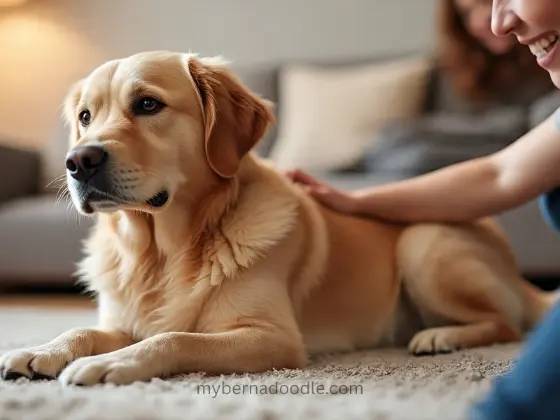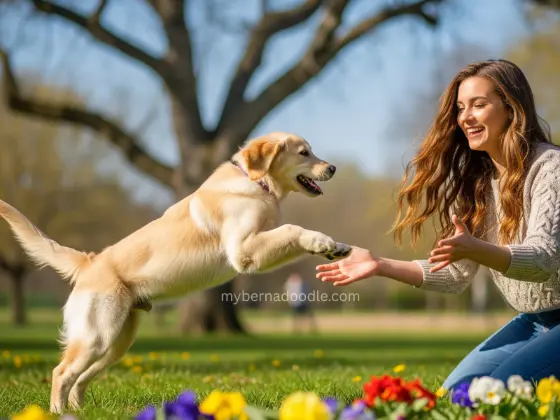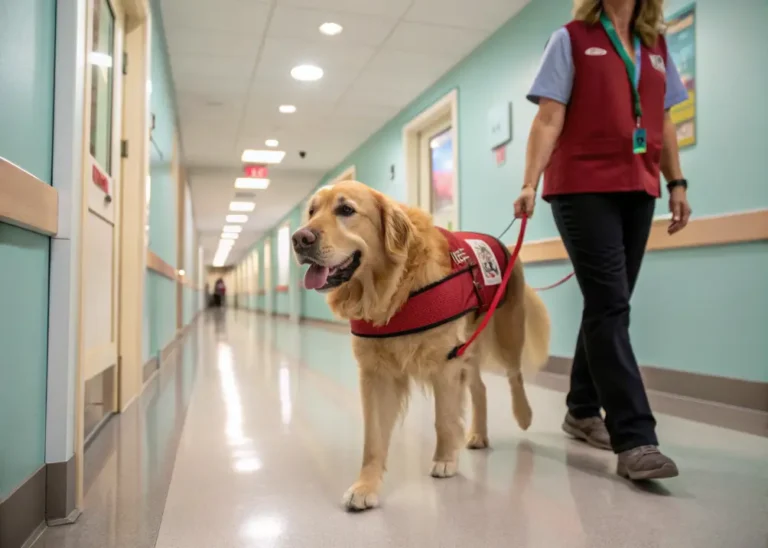Puppy Training Guide for Golden Retrievers: Step-by-Step Tips
Training a Golden Retriever puppy is a rewarding journey that requires patience, consistency, and positive reinforcement. These intelligent, friendly dogs thrive on structure and love learning. Below is a step-by-step guide to help you train your Golden Retriever puppy effectively, tailored to their energetic and eager-to-please nature.
Step 1: Prepare for Training
- Set Up a Safe Space: Create a comfortable area with a crate, bed, and toys. Golden Retrievers are social but need a quiet spot to relax. Ensure the crate is appropriately sized—large enough for them to stand, turn, and lie down.
- Gather Supplies: Stock up on high-value treats (small, soft, and smelly like chicken or cheese), a 6-foot leash, a collar or harness, and chew toys to redirect teething.
- Establish a Routine: Puppies thrive on predictability. Set consistent times for feeding, potty breaks, training, and play. Feed your puppy 3–4 times daily (based on age) and take them out 5–10 minutes after eating, drinking, or playing.

Step 2: Start House Training (Potty Training)
- Create a Schedule: Take your puppy outside every 1–2 hours, especially after waking, eating, or playing. Golden Retriever puppies have small bladders and need frequent breaks (every 30–60 minutes for 8–12-week-olds).
- Choose a Potty Spot: Use the same outdoor spot and a cue like “Go potty.” Reward with treats and praise immediately after they go.
- Supervise Indoors: Keep your puppy in sight or confined to a crate/playpen when unsupervised. Watch for signs like sniffing or circling, and rush them outside.
- Handle Accidents Calmly: If they go indoors, interrupt gently (clap hands), take them outside, and clean thoroughly with an enzymatic cleaner to remove odors. Never punish—it confuses them.
- Nighttime Tip: Limit water 1–2 hours before bed and take them out right before crating for the night.
Pro Tip: Most puppies can hold it for their age in months plus one hour (e.g., a 2-month-old can manage about 3 hours). Adjust as they grow.

Step 3: Crate Training
- Introduce the Crate Positively: Place treats or toys inside to lure them in. Keep the door open initially, letting them explore. Feed meals in the crate to build positive associations.
- Build Duration Gradually: Start with short periods (5–10 minutes) while you’re home, rewarding calm behavior. Slowly increase time, ensuring they’re comfortable before closing the door.
- Use for Sleep and Safety: Crate them at night or when you’re away (no more than 3–4 hours for young pups). Golden Retrievers love cozy spaces but avoid over-crating to prevent anxiety.
- Avoid Forcing: Never push them in or use the crate as punishment. If they whine, wait for a brief moment of quiet before letting them out to avoid reinforcing the behavior.
Goal: A crate should feel like a den—safe and relaxing. Most Goldens adapt quickly due to their easygoing nature.
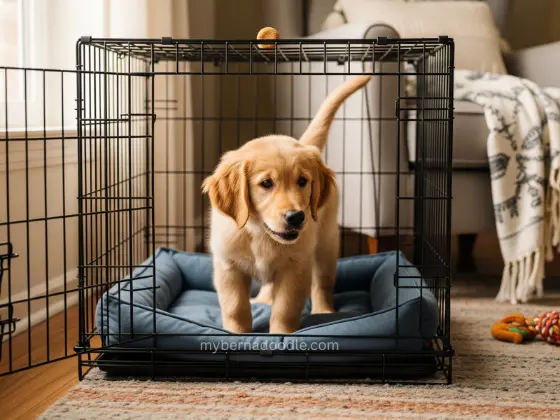
Step 4: Teach Basic Commands
Golden Retrievers are quick learners, so start with foundational commands using positive reinforcement. Train in short, 5–10-minute sessions 2–3 times daily to keep them engaged.
- Sit:
- Hold a treat above their nose, moving it back until their butt hits the ground.
- Say “Sit” as they do it, then reward immediately.
- Practice 5–10 times per session, gradually fading the treat lure.
- Stay:
- Ask for a sit, then hold your palm out and say “Stay.”
- Take one step back, wait 1–2 seconds, then return and reward.
- Gradually increase distance and duration (up to 30 seconds, then minutes).
- Come (Recall):
- In a low-distraction area, crouch, say “Come” in an excited tone, and reward when they reach you.
- Practice on a long leash in larger spaces, rewarding with high-value treats or play.
- Avoid chasing them if they run off—it becomes a game!
- Down:
- From a sit, hold a treat to their nose and lower it to the ground, sliding it forward.
- Say “Down” as they lie down, then reward.
- Be patient—some Goldens take longer to master this.
Tip: Always use a happy tone and reward with treats, praise, or play. Goldens respond best to enthusiasm and consistency.

Step 5: Socialization (Critical for 8–16 Weeks)
- Expose to New Experiences: Introduce your puppy to various people, dogs, sounds (vacuums, cars), and environments (parks, streets). Keep interactions positive and brief to avoid overwhelm.
- Puppy Classes: Enroll in a reputable puppy kindergarten (check for trainers using positive reinforcement). Goldens love social settings, and classes teach manners around distractions.
- Handle Gently: Practice touching their paws, ears, and mouth to prepare for grooming and vet visits. Pair with treats to make it pleasant.
- Avoid Risky Areas: Until fully vaccinated (around 16 weeks), avoid dog parks or areas with unknown dogs to prevent diseases like parvovirus.
Key Window: Socialization before 16 weeks shapes a confident, friendly Golden. Aim for 100 positive exposures (e.g., meeting 5 new people weekly).

Step 6: Address Common Behaviors
- Biting/Nipping: Golden Retriever puppies are mouthy due to teething and playfulness.
- Redirect to chew toys (like Kongs with frozen peanut butter).
- If they nip, say “Ouch,” stop play, and walk away for 30 seconds.
- Reward gentle play with treats and attention.
- Jumping: Goldens are exuberant and may jump to greet.
- Ignore jumping, turn away, and only pet when all four paws are on the ground.
- Teach “Sit” as an alternative greeting behavior.
- Chewing: Provide plenty of chew toys and rotate them for novelty. Supervise to prevent chewing on furniture, and redirect to toys when caught.
Consistency is Key: Correct unwanted behaviors calmly and redirect to desired ones. Punishment can make Goldens anxious, slowing progress.

Step 7: Leash Training
- Introduce the Leash: Let them drag a lightweight leash indoors to get used to it. Reward for staying near you.
- Teach Loose-Leash Walking:
- Start in a low-distraction area. Hold treats by your side to keep them close.
- Walk a few steps, reward for staying near without pulling.
- If they pull, stop walking, wait for slack, then continue.
- Use a Front-Clip Harness: This discourages pulling, especially for strong Goldens.
Tip: Goldens love to explore, so make walks fun with sniff breaks as rewards for good leash manners.
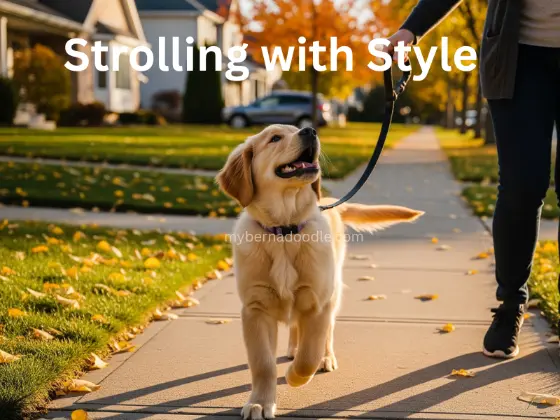
Step 8: Mental and Physical Stimulation
- Exercise Needs: Golden Retriever puppies need 5 minutes of exercise per month of age, twice daily (e.g., 20 minutes for a 4-month-old). Avoid intense running or jumping until their growth plates close (around 12–18 months) to protect joints.
- Mental Games: Use puzzle toys, treat-dispensing balls, or hide-and-seek with treats to engage their sharp minds. Goldens excel at scent games.
- Training as Fun: Incorporate tricks like “spin” or “touch” to keep sessions lively. Goldens love learning and showing off.

Step 9: Build a Strong Bond
- Positive Reinforcement: Always reward good behavior with treats, praise, or play. Goldens are sensitive and thrive on affection.
- Be Patient: Puppies make mistakes. Stay calm and consistent—Goldens want to please but need clear guidance.
- Spend Quality Time: Play fetch (a Golden favorite!), cuddle, or train together to strengthen your connection.

Step 10: Transition to Adolescence (6–18 Months)
- Reinforce Training: Adolescence can bring testing boundaries. Revisit commands and stay consistent.
- Increase Exercise: As they grow, Goldens need 1–2 hours of daily activity (walks, fetch, swimming). A tired Golden is a well-behaved Golden.
- Consider Advanced Training: Goldens excel in obedience, agility, or therapy work. Explore classes to channel their energy.
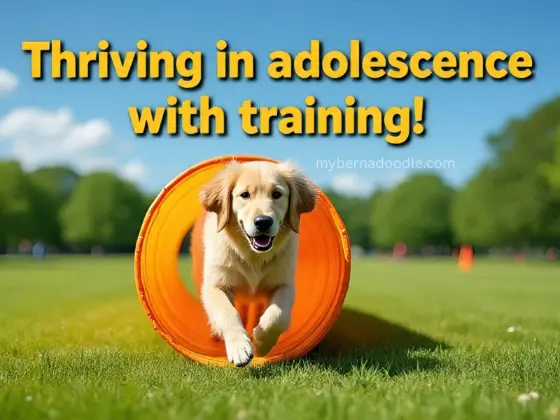
Additional Tips
- Health Check: Ensure your puppy is healthy (vaccines, deworming, vet visits) to rule out discomfort affecting behavior.
- Spay/Neuter: Consult your vet (typically done at 6–12 months) to reduce hormonal behaviors like marking or roaming.
- Find a Trainer: If struggling, hire a certified trainer (look for CPDT or KPA credentials) who uses force-free methods. Goldens respond poorly to harsh techniques.
- Be Consistent: Everyone in the household should use the same cues and rules to avoid confusing your puppy.
Sample Daily Schedule (8–12-Week-Old Puppy)
- 6:00 AM: Potty break, short play.
- 6:30 AM: Breakfast, potty break, 5-minute training (sit, come).
- 8:00 AM–12:00 PM: Potty breaks every 1–2 hours, crate naps, short play or chew sessions.
- 12:30 PM: Lunch, potty, 5-minute training (down, stay).
- 1:00–5:00 PM: Mix of naps, play, and potty breaks. Short walk or backyard exploration.
- 6:00 PM: Dinner, potty, training or puzzle toy.
- 7:00–10:00 PM: Play, socialization (if safe), calm time with family.
- 10:30 PM: Final potty break, crate for bedtime.
Common Mistakes to Avoid
- Inconsistency: Changing cues or rules confuses your puppy.
- Skipping Socialization: This leads to fearfulness or reactivity, uncommon but possible in under-socialized Goldens.
- Over-Exercising: Too much activity can harm growing joints.
- Negative Methods: Yelling or physical corrections can damage your Golden’s trust and eagerness to learn.
Resources
- Books: “The Puppy Primer” by Patricia McConnell or “Perfect Puppy in 7 Days” by Sophia Yin.
- Online: Check YouTube channels for positive reinforcement videos.
- Local Classes: Search for trainers via the American Kennel Club (akc.org) or Karen Pryor Academy
By following these steps with patience and love, your Golden Retriever puppy will grow into a well-mannered, confident companion. Their intelligence and desire to please make training a joy—enjoy the process!
From training tricks to grooming hacks, we’ve got plenty of Golden Retriever blogs waiting for you.
Golden Retriever Aggression: Causes, Prevention, and Facts (2025)
Do Golden Retrievers Bark a Lot? Understanding Their Barking Habits
How to Keep Your Golden Retriever Active and Healthy | Expert Wellness Tips
Types of Golden Retrievers: English Cream, American, and Canadian
You may also like to check out our helpful blogs about Bernedoodles
10 Amazing Facts You Need to Know About Bernedoodles
How to Care for A Bernedoodle Puppy
Bernedoodle Size Guide: Tiny, Mini, and Standard Bernedoodles Explained

